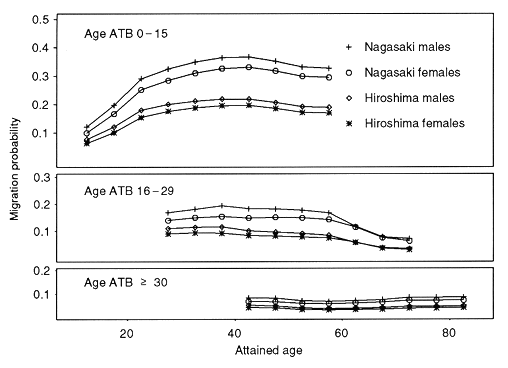Migration Probability in the Adult Health Study
This article was originally published in RERF Update 3(3):10, 1991
Because of the nature of the Japanese family registration system (known as the koseki), information on mortality among members of the Life Span Study cohort is virtually complete. However, this is not the case for other outcomes of interest. In particular, in analyses of the cancer incidence data from the Hiroshima and Nagasaki tumor registries, it is necessary to allow for the effect of migration on the number of cases reported.
The accompanying Figures present the estimated migration probabilities for members of the Adult Health Study by time, age at the time of the bombings (ATB), sex, and city. These estimates were derived from models which allow people to leave and return to the area, and they are based upon contacting information obtained by the staff of RERF’s Adult Health Study and the Contacting Section.
From these figures, it can be seen that younger survivors are more likely to migrate than older survivors, that men are more likely to migrate than women, and that Nagasaki residents have higher migration rates than Hiroshima residents. The estimates shown in these plots were used as the basis of an adjustment for migration in the recently completed analyses of the Life Span Study cancer incidence data. The ideas underlying this adjustment will be discussed in a forthcoming Commentary and Review Series report.


